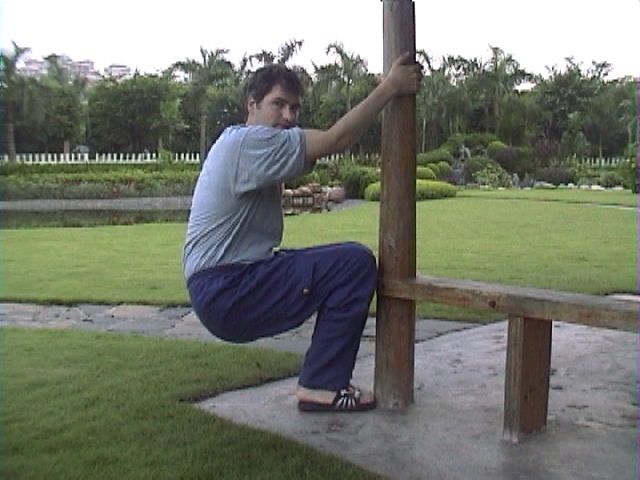|
Pole squat improves six directions.
Doing the six directions I always had trouble getting up
and down from the chair with the feet flat on the ground. I blamed my short
muscles in my back legs and Achilles for this.
Now after doing the pole squat for more than 2 1/2 weeks in
the China retreat I learned that the most important problem was not about short
muscles, but the flexibility of the lower back or mingmen area.
To my surprise I felt the first improvement doing the six
directions method. The pole squat loosened up my back giving me the ability to
direct the power better and get the movement for standing up from the ‘Dantien’ area instead of using muscles in the legs.
Getting up and sitting down between cycles is much easier
than before. As result the whole six directions exercise improved and has become
more harmonious for me.
There are other exercises, like the wall squat that open up
the lower back eventually, but the good thing about the pole squat is that you
can focus better on the lower back area making the exercise more effective.
Holding the pole when going downwards stretches the lower
back area. At the same moment you relax the lower back.
Because you have the pole to assist a bit when coming up,
you can really concentrate on making the movement upwards from the lower back.
First just the awareness of letting go the stress on the
muscles helps a lot. After that, it becomes a little bit better each day and you
feel the lower back opening up.
I can recommend this GONG to anyone wanting to loosen up
the lower back. It will also improve many of the other exercises used in CHI-LEL,
like the wall squat and parts of body and mind.
|
